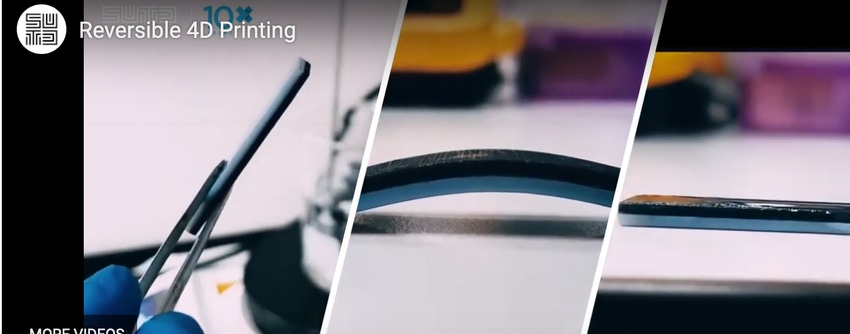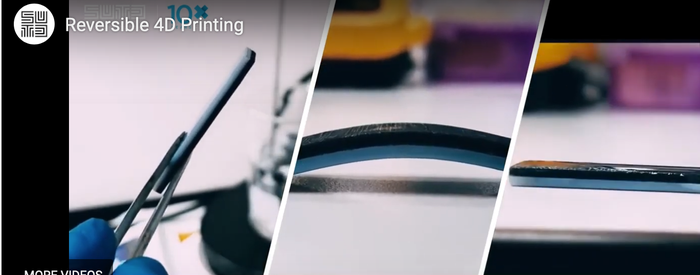A technique developed by researchers at Singapore University of Technology and Design takes a novel approach to creating reversible 4D printing.
February 21, 2020

With 3D printing in what might be considered the early adulthood phase of its development, scientists now are turning attention to evolving 4D printing, which gives 3D-printed objects the ability to change shape autonomously.
|
A team at Singapore University of Technology and Design (SUTD), has created a new reversible 4D printing technology that not only allows a 3D-printed object change shape either in response to heat or water, but also to revert back to its original shape without human intervention. (Image source: SUTD) |
A team at Singapore University of Technology and Design (SUTD) has gone even a step further and created a new reversible 4D printing technology. In this new process, not only can a 3D-printed object change shape either in response to heat or water, it can also revert back to its original shape without human intervention.
Researchers at SUTD collaborated with scientists Nanyang Technological University on the new process, which takes a different tack than some previously successful reversible 4D-printing techniques.
Until now, scientists typically used a hydrogel material to create a 4D-printed reversibility without the need for human intervention. In these methods, the object resumes its original shape using a hydrogel as a stimulus.
However, this technique has its limitations due to the lack of mechanical strength in this type of material. For applications that involve load bearing, a hydrogel is not an optimal choice, researchers said. Moreover, research using various layers of material as an alternative to a hydrogel allow for reversible 4D printing, but in a clunky way that is not very mechanically efficient.
Two-Material Approach
Instead of using a hydrogel, the SUTD team used two materials compatible for printing in a 3D polyjet printer that demonstrated an ability to maintain their mechanical strength during and after the process—the transition material VeroWhitePlus and the elastomer TangoBlackPlus.
In the process, researchers used ethanol to cause the elastomer to swell, which—like the hydrogel in other similar processes—creates stress on the transition material, they said. Then, when heated, the transition material changes its shape to a second shape.
The process than requires drying the ethanol out of the elastomer and heating the transition material again, which allows it to revert to its original shape, researchers said. At the same time, the elastomer pulls the transition material back due to elastic energy stored in it after drying.
The team published a paper on their work in the journal Engineering.
Researchers acknowledged they have a long road ahead to make the process viable for commercial printing. However, SUTD Professor Chua Chee Kai, lead researcher on the project, said the process his team developed has potential for use in future applications when more mechanisms and more materials become available for this type of printing.
“While reversible 4D printing in itself is a great advancement, being able to use a more robust material while ensuring a more precise reversal during shape change is revolutionary, as it allows us to produce complex structures that cannot easily be achieved through conventional fabrication,” he said.
RELATED ARTICLES:
Elizabeth Montalbano is a freelance writer who has written about technology and culture for more than 20 years. She has lived and worked as a professional journalist in Phoenix, San Francisco and New York City. In her free time she enjoys surfing, traveling, music, yoga and cooking. She currently resides in a village on the southwest coast of Portugal.
About the Author(s)
You May Also Like




